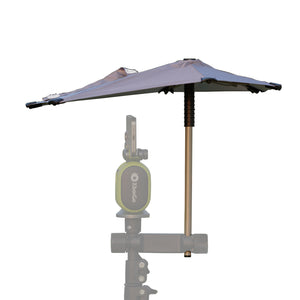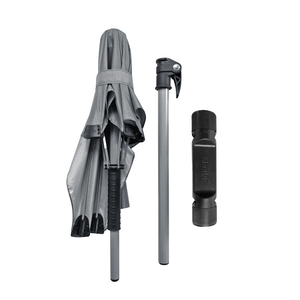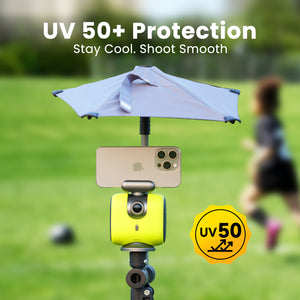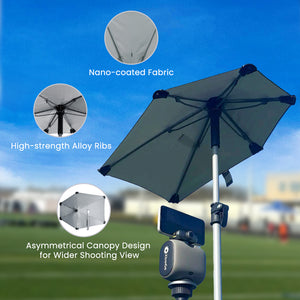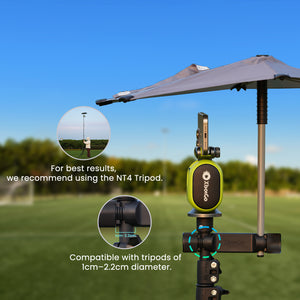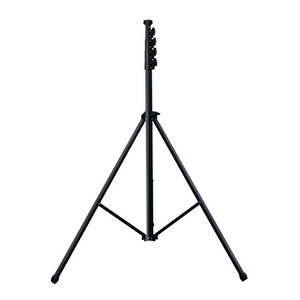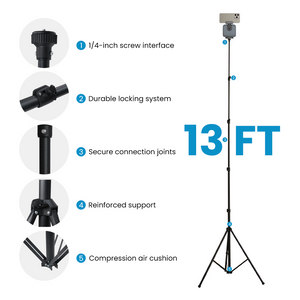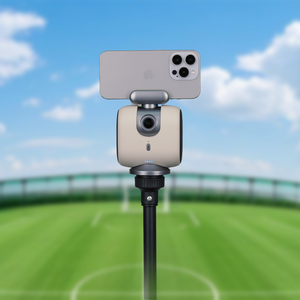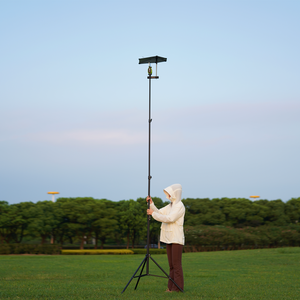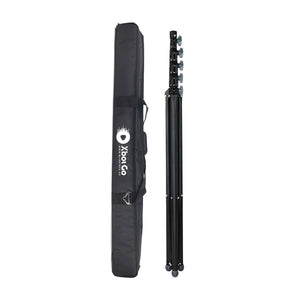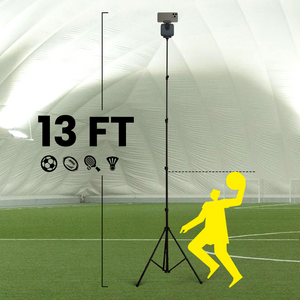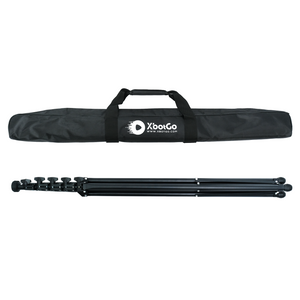XbotGo Chameleon AI Sports Camera
Hockey Stick Curve Chart: Choose Your Perfect Blade Pattern 2025
If you've ever stood in a hockey shop staring at rows of sticks with cryptic codes like P92, P88, or P28, you're not alone. Those seemingly random letters and numbers represent the secret to unlocking your best performance on the ice—your hockey stick curve.
Why Your Curve Choice Matters More Than You Think
The curve on your hockey stick blade isn't just a style preference—it's a performance multiplier that affects every puck you touch. The right curve can transform your wrist shot from wobbly to wicked, while the wrong one might leave you fighting your equipment instead of dominating the game.
Think of your blade curve like a golf club selection. Just as you wouldn't use a putter to drive off the tee, different hockey curves excel at different aspects of the game. Understanding these differences could be the breakthrough your game needs.
Decoding the Hockey Stick Curve: What Those Charts Really Mean
Hockey stick curves have four main characteristics that work together to create each blade's unique personality.
Curve Location: Where the Magic Happens
The location of your blade's curve fundamentally changes how it performs:
Heel Curves bend near the blade's base, creating a large sweet spot perfect for crushing slap shots. This curve type gives defensemen the leverage they need for big clearing shots and accurate long passes.
Mid Curves place the bend in the blade's center, offering what calls "excellent versatility." These patterns balance puck control with shooting power, making them ideal for players who do a bit of everything.
Toe Curves concentrate the bend at the blade tip. These are "ideal for quick playmaking" and have become increasingly popular with skilled forwards who love toe drags and quick releases.
Face Angle: Your Elevation Control
The face angle determines how easily you can lift the puck:
- Closed Face: Keeps shots low and powerful, excellent for backhands
- Slightly Open: Balanced performance for most situations
- Open Face: Makes going top-shelf effortless but can send shots sailing if you're not careful
Curve Depth: Finding Your Sweet Spot
Legal curves range from 3/8" to 3/4" deep. Some emphasize that deeper curves offer more control but make backhand shots significantly harder—definitely not recommended for beginners.
Blade Length and Toe Shape
Short blades excel in tight spaces, while longer blades provide more surface area for receiving passes. Round toes feel natural for stickhandling, but square toes give you an edge in board battles and poke checks.
The Big Three: Most Popular Curves Explained
After analyzing feedback from thousands of players and equipment experts, three curves consistently dominate the ice.
P92/P29/W03: The People's Choice
This mid-toe curve with an open face has become hockey's most popular pattern for good reason. It forgives minor technique flaws while still enabling advanced plays.
Why Players Love It:
- Large sweet spot for deflections and tip-ins
- Open face helps elevate pucks without being overwhelming
- Versatile enough for any position or playing style
- Available from every major manufacturer
Best For: New players, versatile forwards, anyone wanting one stick that does everything well
Watch Out For: Some players find it less effective for precise toe drags compared to specialized toe curves
P88: The Consistent Performer
The P88 represents hockey's most balanced curve, earning fierce loyalty from players who value reliability over flash.
Real player testimony in hockey community: "I've been using a p88 for 5 years now and trying to switch it up here and there but always go back even if I overall enjoyed the other curve I was trying."
Technical Advantages:
- More blade contact with ice for consistent puck control
- Slightly open face balances lift with backhand capability
- Mid-curve design excels at both shooting and passing
- Forces players to develop proper technique rather than relying on extreme curve
Best For: Two-way players, defensemen, anyone who values consistency
P28: The Sniper's Secret
The P28 has revolutionized how skilled players attack the net, but it comes with a learning curve as steep as its toe bend.
Hockey Tutorial's video analysis describes it perfectly: "You can almost shovel it into the corners... it's very easy to get the puck under and straight up."
Performance Profile:
- Extreme toe curve enables lightning-quick releases
- Open face makes top-shelf shots almost automatic
- Excels at close-range "Michigan" style moves
- Requires significant skill to control effectively
Best For: Advanced forwards, players who handle the puck on their toe, close-quarters specialists
Not For: Beginners (seriously, some users unanimously warn against starting with P28)
Position-Specific Recommendations That Actually Work
Your position influences which curve characteristics matter most for your game.
Forwards: Maximizing Offensive Threat
Different forward roles benefit from different curves:
Playmakers often prefer P88 or PM9 patterns that excel at both passing and shooting. The balanced nature helps them adapt to any situation.
Power Forwards typically choose P92/P29 for its versatility in traffic. The larger blade surface helps win battles in front of the net.
Snipers gravitate toward P28 once they've mastered the fundamentals. The quick release potential is unmatched for players with soft hands.
Defensemen: Control and Clear
Defensive players need curves that support their unique responsibilities:
Offensive Defensemen often use P88 for its balance between point shots and outlet passes. The consistent blade contact helps with stick-to-stick defensive plays.
Stay-at-Home Defenders might prefer heel curves or P91A patterns for maximum power on clearing attempts. The larger sweet spot near the heel generates serious velocity on slap shots.
Modern Two-Way Players frequently choose P92 for its adaptability. Whether joining the rush or defending the zone, this curve handles it all.
The Cross-Brand Confusion: What Really Matches?
One of hockey's most frustrating challenges is understanding equivalent curves across brands. Marketing names rarely tell the whole story.
True Equivalents (Player-Verified):
- P92 (Bauer) = P29 (CCM) = W03 (Warrior) = T92 (True)
- P88 (Bauer) ≈ P88 (CCM) ≈ W88 (Warrior) ≈ T88 (True)
- P28 (Bauer) = P28 (CCM) = W28 (Warrior) = T28 (True)
Someone attempts to solve this confusion by creating universal "Blade Type" numbers, though most players still reference manufacturer codes.
Important: Even "equivalent" curves can feel different due to blade length, lie angle, and construction differences between brands.
Smart Testing Strategy: Find Your Curve Without Breaking the Bank
Finding your ideal curve doesn't require buying dozens of sticks. Follow this proven approach from experienced players.
Step 1: Narrow Your Options
Based on your skill level and position:
- Beginners: Test only P88 and P92
- Intermediate: Try your current curve family plus one alternative
- Advanced: Fine-tune within your preferred curve type
Step 2: Test Economically
The hockey community offers this golden advice: "Buy 2 used ones and get the feel then whichever you like buy new or ask your team if anyone has any extras."
Other testing options:
- Borrow teammates' sticks during practice
- Visit pro shop demo days
- Buy used sticks from online marketplaces
- Use retailer return policies wisely
Step 3: Track Real Performance
Don't just go by feel—measure actual results:
- Shot accuracy from different positions
- Success rate on backhands
- Puck control in tight turns
- Comfort level after full practices
Common Mistakes That Cost You Goals
Avoid these curve selection pitfalls that trap many players.
The "Pro Copy" Problem
Just because Matthews uses P92 doesn't mean you should. Pro players choose curves based on their specific style developed over decades. Your game likely requires different tools.
Ignoring Availability Reality
Exotic curves might seem appealing, but good luck finding replacements. Stick to the big three (P92, P88, P28) unless you enjoy hunting for equipment.
The "Maximum Curve" Myth
More curve doesn't equal better performance. Many players actually improve when switching from extreme to moderate curves because they stop fighting their equipment.
Buying Without Testing
Online curve charts can't replicate the feel of a stick in your hands. Always test before committing to a new pattern.
Making Your Final Choice: A Decision Framework
Your ideal curve depends on three factors that only you can evaluate.
Current Skill Level
Beginners should choose forgiving curves (P88 or P92) that won't punish minor technique errors. These patterns help you learn proper mechanics.
Intermediate players can experiment more freely but should avoid constant changes. Stick with what works while refining your skills.
Advanced players might benefit from specialized curves that complement their refined playing style. Small adjustments at this level yield bigger results.
Playing Style Priority
Ask yourself honestly:
- Do I prioritize quick shots or powerful shots?
- Am I more comfortable with the puck on my forehand or equally skilled both ways?
- Do I play more in tight spaces or from distance?
Your answers point toward your ideal curve characteristics.
Position Requirements
Your role on the ice should influence but not dictate your choice. Many forwards love P88, and some defensemen thrive with P28. Rules are meant to be broken if it improves your game.
The Bottom Line on Blade Curves
After analyzing thousands of player experiences and expert insights, one truth emerges clearly: the best curve is the one that feels natural in your hands and consistently helps you make plays.
For most players, that means starting with P88 or P92 and sticking with it long enough to truly master its characteristics. These versatile patterns provide the foundation for developing complete offensive skills.
Remember that changing curves is like changing your golf swing—it temporarily disrupts your game before (hopefully) improving it. Make changes thoughtfully, test thoroughly, and give yourself time to adjust.
The curve on your stick blade might seem like a small detail, but it influences every puck interaction you have on the ice. Choose wisely, practice consistently, and let your curve help unlock your full potential. Your teammates (and your stats) will thank you.
XbotGo Chameleon AI Sports Camera
Capture every moment with AI-powered tracking. Perfect for coaches, parents, and athletes who want seamless footage without manual filming.







 Soccer
Soccer Basketball
Basketball Ice Hockey
Ice Hockey Rugby
Rugby










